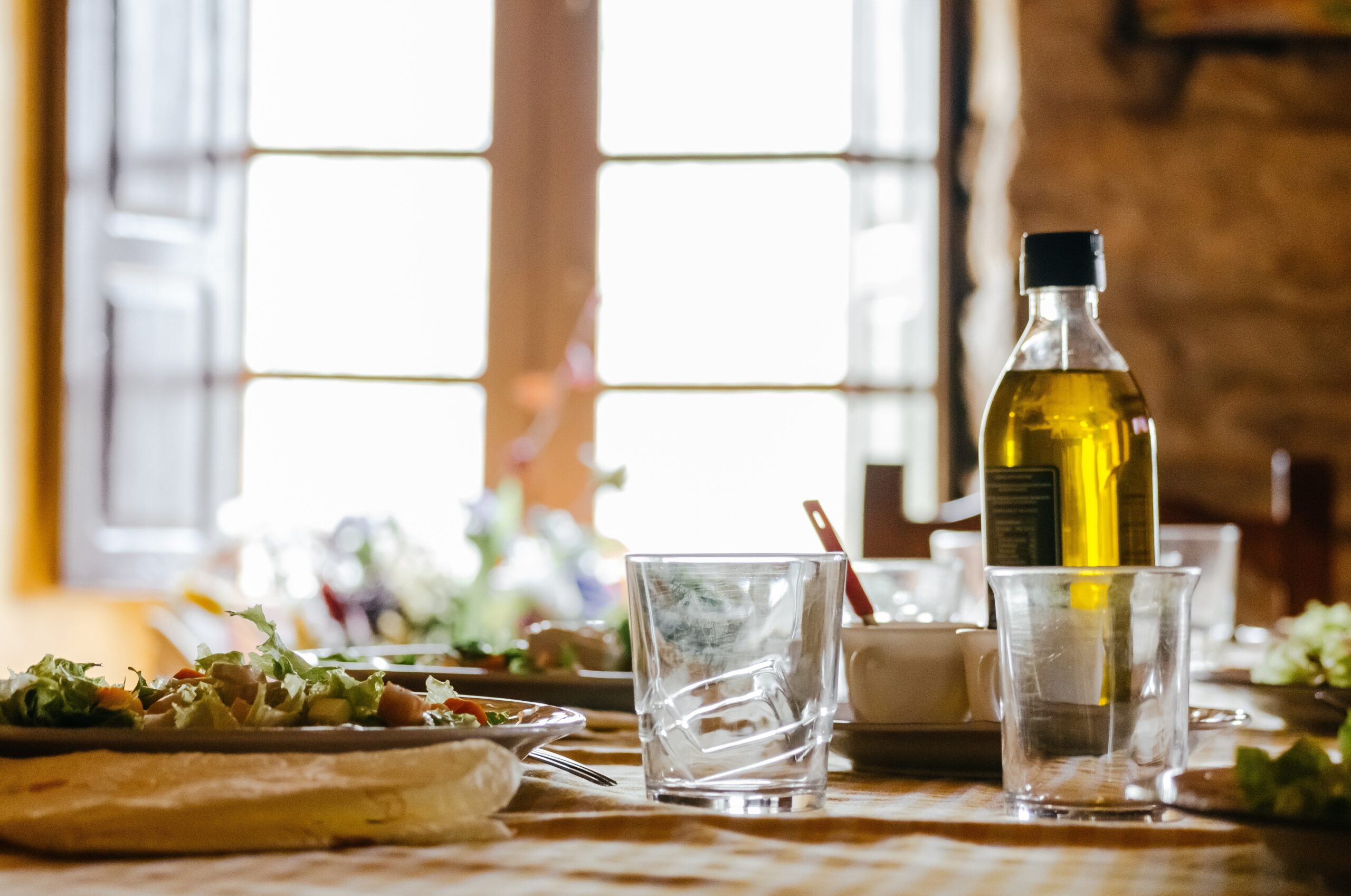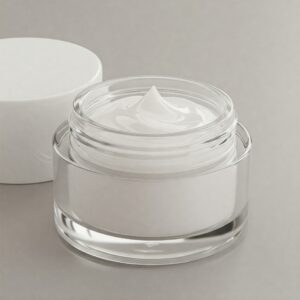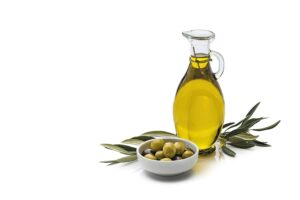How to store olive oil to preserve its freshness, flavor, and beneficial properties
Extra virgin olive oil, the true “green gold” of the Mediterranean diet, is a pillar of our culinary tradition, appreciated worldwide for its unmistakable flavor and numerous health benefits. However, despite its apparent robustness, olive oil is a living and delicate product that can degrade rapidly if not stored with due care. Improper storage not only compromises its precious organoleptic qualities, such as aroma and taste, but can also significantly reduce the content of beneficial compounds, like polyphenols, thus nullifying part of its nutritional and health value.
The three great enemies of olive oil: light, air, and heat
To fully understand how to store olive oil correctly, it is essential to know its main adversaries. Three environmental factors, often present in our kitchens, work tirelessly against its integrity: light, air (and therefore oxygen), and heat. These elements, individually harmful, can act synergistically, exponentially accelerating the degradation process. For example, a transparent glass bottle (exposed to light) left near a sunny window (subject to heat) and perhaps not perfectly closed (in contact with air) will see the quality of its contents plummet in a very short time.
- Light: Both direct sunlight and artificial light, especially UV rays, are sworn enemies of olive oil. Exposure to light triggers and accelerates the oxidation process, which leads to an alteration of flavor, with the appearance of unpleasant notes, and odor. The color can also undergo variations, shifting from the typical bright green or golden yellow to dull yellow-orange hues, a sign of ongoing deterioration.
- Air (Oxygen): Prolonged contact with the oxygen present in the air is another primary cause of degradation. Oxygen promotes the formation of free radicals and the oxidation of fatty acids, a chemical process that leads to the oil becoming rancid. For this reason, it is crucial to always seal the bottle or container hermetically after each use. Every time the container is opened, new air comes into contact with the oil, contributing to its progressive decay.
- Heat: High temperatures and thermal shocks are extremely harmful to olive oil. Heat accelerates the chemical degradation reactions, compromising the organoleptic and nutritional characteristics of the product and promoting the onset of rancidity. Even moderate but consistently high temperatures, such as those found near stoves or in inadequately insulated pantries, can damage the oil over time.
Understanding how these three “enemies” interact is the first step in adopting an effective storage strategy that protects the oil on all fronts.
How to store olive oil at home: the practical guide
Once the risks are understood, let’s move on to the solutions. Storing olive oil correctly at home does not require superhuman efforts, but rather the adoption of some good habits and the conscious choice of location and container. Often, the convenience of having oil readily available near the stove prevails over the rules of proper storage; however, a small change in habits can translate into a huge benefit in terms of product quality and longevity.
Where to store oil: finding the perfect spot in your kitchen (and beyond)
The ideal place for where to store oil is a cool, dry, and, above all, dark environment. Closed kitchen cabinets, away from heat sources such as ovens, stoves, radiators, or direct sunlight that might filter through a window, represent an excellent choice. A cool, well-insulated pantry or a cellar, provided the temperature is relatively constant and within the ideal parameters, can also be suitable places.
It is essential to avoid storing oil in places exposed to temperature fluctuations, such as balconies, or in the car trunk for extended periods, especially during hot months. Another important aspect is to keep the oil away from products with strong odors, such as detergents, particularly aromatic spices, or other foods with a pungent smell. Oil, in fact, tends to absorb surrounding odors, which could irreparably compromise its aromatic profile. Therefore, when deciding where it is best to store olive oil, this factor should also be considered.
Choosing the right container: oil-friendly and unfriendly materials
The choice of container is just as crucial as the storage location. Not all materials are equal when it comes to protecting oil.
- Recommended Materials:
- Dark glass (green or brown): Dark glass bottles are one of the best options for daily use. They offer excellent protection from light, are inert (do not react with the oil or alter its flavor), and are easily recyclable.
- Stainless steel (INOX 18/10): This material is ideal for storing larger quantities of oil and for longer periods. INOX steel offers a total barrier against light and oxygen (if the container has an airtight seal), is robust, easy to clean, and does not impart flavors to the oil. It is the preferred choice of many producers for storage.
- Discouraged Materials or to Use with Caution:
- Plastic (PET, PVC, etc.): In general, plastic containers are not recommended for long-term storage of olive oil. Plastic may not adequately protect from light, can be porous to oxygen and moisture, and, in some cases, might release chemicals into the oil, altering its flavor and safety.
- Transparent glass: Although some consumers prefer transparent bottles to see the oil’s color, these offer no protection from light, one of the main enemies of oil.
- Tinplate: Tins can offer good protection from light and oxygen and are lightweight and resistant. However, it is crucial that they are internally coated with non-toxic food-grade lacquers to prevent corrosion and the possible transfer of a metallic taste to the oil. Some studies suggest that, in terms of preserving quality over time, they might be inferior to dark glass or stainless steel. They are a good option for transport or if the oil is expected to be consumed relatively quickly.
- Coated cardboard and Bag-in-Box: These are newer packaging options that offer good protection from light and oxygen. However, they are still less common for domestic use, and their effectiveness in long-term home storage is less studied than traditional materials.
A practical tip, especially if you buy oil in large containers like 3 or 5-liter tins, is to transfer the oil into smaller dark glass bottles (e.g., 0.50 or 0.75 liters) for daily use. It is important to fill these smaller bottles well to minimize the amount of air in contact with the oil and to seal them hermetically. This practice, similar to that adopted in professional kitchens where small kitchen “squeeze bottles” are used for daily service, allows for a balance between ease of use and optimal preservation of the main supply.
To facilitate the choice, the following table summarizes the characteristics of the main materials:
| Material | Light Protection | Oxygen Protection (if well sealed) | Substance Release / Flavor Alteration | Durability | Ideal For |
| Dark Glass | Excellent | Good | No | Fragile | Daily use, small quantities |
| Stainless Steel (18/10) | Excellent | Excellent | No | Very robust | Large stocks, long-term storage |
| Tinplate (with internal coating) | Good | Good | Low risk if well coated | Good | Transport, medium-short term consumption |
| PET Plastic | Poor/None | Variable, potential porosity | Potential risk | Medium | Not recommended for storage |
| Transparent Glass | None | Good | No | Fragile | Not recommended for storage |
Ideal temperature for storing olive oil: the perfect climate for your green gold
The ideal temperature for storing olive oil is another determining factor. Generally, a range between 14°C and 18°C (57°F – 64°F) is recommended. Some authoritative sources, such as the International Olive Council (IOC), extend this range to 13-25°C (55°F – 77°F), while others indicate 12-25°C (54°F – 77°F) or 15-25°C (59°F – 77°F). More than the specific value, temperature consistency is important, thus avoiding thermal shocks. The “room temperature” of a house can vary considerably depending on the season, heating system, or geographical location. For those who wish to be particularly scrupulous, using a simple environmental thermometer in the pantry or chosen storage location can help actively monitor conditions and transform a generic concept like “cool place” into an objective measurement.
What happens if the temperature is not ideal?
- Excessive cold: At low temperatures (generally below 10-12°C or 50-54°F), olive oil can partially solidify or become cloudy due to the crystallization of some of its natural components, such as waxes. This phenomenon does not compromise its intrinsic quality. By bringing the oil back to room temperature (ideally between 18°C and 20°C or 64°F – 68°F), it will gradually return to its liquid and clear appearance within 24-48 hours. It is important to note that olive oil should not be stored in the refrigerator, as such low and constant temperatures are not beneficial and can alter the perception of some aromas.
- Excessive heat: As already mentioned, high temperatures drastically accelerate oxidation and rancidity processes, ruining the oil.
The following table summarizes the ideal storage conditions:
| Factor | Specific Recommendation | Why it’s Crucial |
| Location | Cool, dry, dark (e.g., closed cabinet, pantry) | Protects from light, heat, and temperature fluctuations |
| Container | Dark glass, stainless steel; well-sealed | Protects from light and oxygen; avoids contamination |
| Temperature | Constant, ideally between 14°C and 18°C (acceptable range 12-25°C) / 57°F – 64°F (acceptable 54°F – 77°F) | Slows degradation reactions; avoids solidification or overheating |
| Seal | Airtight, cap immediately after use | Minimizes contact with oxygen, preventing oxidation |
| Beware of | Extraneous odors (detergents, strong spices), direct light, heat sources (stoves, sun) | Oil absorbs odors; light and heat are the main enemies of its integrity |
Freshly pressed olive oil (“new oil”): how to treat the freshest “green gold”
Freshly pressed olive oil, commonly known as “new oil” (olio nuovo), is a particularly prized product, celebrated for its vibrancy and intensity. It is distinguished by a more fruity and decisive flavor, with more pronounced spicy and bitter notes, which are a clear indication of its richness in polyphenols, powerful natural antioxidants. Its color is often brighter and may have a slight cloudiness due to tiny olive pulp particles remaining in suspension. This “freshness” is not just a matter of taste: new oil is actually richer in beneficial compounds than more mature oil.
However, these very distinctive characteristics, linked to its youth and the presence of volatile substances, make it particularly sensitive. Although its high antioxidant content initially gives it greater stability against oxidation, it is essential to adopt specific storage measures to preserve this wealth of aromas and properties for as long as possible.
For how to store freshly pressed olive oil:
- Filtration or Racking: If the new oil is “must” (mosto), i.e., unfiltered, it might contain small amounts of vegetation water and pulp residues (the so-called “morchia” or sludge). These residues, over time, can settle at the bottom and trigger fermentation processes that would alter the oil’s flavor. For this reason, traditionally, racking was recommended after a few weeks to separate the clear oil from the sediment. Today, many modern mills perform light filtration or controlled decantation, which reduces this problem. If you buy oil directly from the producer and are unsure about the degree of filtration, it’s best to ask for advice.
- Adequate Containers: As with mature oil, the ideal containers are dark glass or, for larger quantities, stainless steel. It is particularly important with new oil to fill the containers as much as possible to minimize the amount of air in contact with the product, as oxygen is one of the main culprits for loss of freshness.
- Storage Conditions: The general rules do not change: store in a cool, dry, and dark place, away from heat sources and light.
It is important to remember that the “superiority” of new oil is intrinsically linked to its freshness. Therefore, it should be consumed relatively quickly to fully appreciate its unique qualities before time inevitably begins to dull its aromatic intensity and reduce the content of volatile compounds.

How long does olive oil last? duration and expiration dates
One of the most frequently asked questions is how long does olive oil last. The answer depends on several factors, including the initial quality of the oil, storage methods, and whether the package is intact or already opened.
- General Shelf-life (Unopened Package): Good quality extra virgin olive oil, stored optimally (protected from light, air, and heat), generally maintains its best characteristics for a period ranging from 12 to 18 months from the bottling date. Some sources and recommendations from the International Olive Council (IOC) indicate a shelf life of up to 24 months from bottling, especially for high-quality oils stored under strict conditions. It is always advisable to check the harvest or production date, if reported on the label, in addition to the bottling date, to get a more precise idea of the product’s actual freshness.
- After Opening: Once the package is opened, the oil’s lifespan decreases drastically. With each use, the oil comes into contact with air, and oxygen begins its oxidation work. For this reason, it is recommended to consume the oil within 1-3 months or, at most, within 3-6 months of opening to ensure its freshness, flavor, and nutritional properties. The rate of degradation after opening is often underestimated; even if the expiration date on the bottle is still far off, once opened, the oil begins a more rapid qualitative decline. This should also guide the choice of purchase size: if consumption is limited, it is preferable to opt for smaller packages.
- The “Best Before Date” (TMC in Italian): Olive oil labels feature the words “Best before” followed by a date. This is the Best Before Date and not a strict expiration date like that of fresh products (e.g., milk or yogurt). The Best Before Date indicates the period within which the producer guarantees the maintenance of the product’s optimal organoleptic and qualitative characteristics, if stored correctly. An impeccably stored oil might still be edible and safe even after this date, but it is likely to have lost some of its fragrance, flavor, and polyphenol content.
- Oil in Tins: For oil stored in tins, the same considerations apply once opened: it is advisable to consume it within a few months (3-6 months). It is crucial to reseal the tin’s opening tightly or, even better, transfer the remaining oil into smaller, well-sealed dark glass containers.
Old or rancid olive oil: what to do?
It can happen that you find a long-forgotten bottle of oil in the pantry or notice that the oil you are using has changed flavor. It is important to know how to distinguish between simply “old” oil and rancid oil, and to know what to do with old olive oil or oil that is no longer suitable for food consumption.
How to recognize rancid olive oil
Rancidity is a process of fat oxidation that profoundly alters the characteristics of the oil. Recognizing rancid oil is crucial both to avoid ruining dishes and for health reasons, as consuming rancid oil can have negative effects. Here are the signs to watch out for:
- Smell: Rancid oil emits an unpleasant odor, which can resemble paint, solvents, wax crayons, spoiled nuts, or wet cardboard. The fresh, fruity aroma typical of good oil completely disappears.
- Taste: On the palate, rancid oil is unpleasant, with a taste that can be described as greasy, metallic, “oily,” or with a pungent and unpleasant bitterness, very different from the pleasant bitter note that characterizes some fresh, quality oils.
- Appearance: Appearance is not always the most reliable indicator on its own. However, an excessively light color, almost transparent, or an abnormal cloudiness (not due to cold) in an oil that was previously clear, can be suspicious signs. Sometimes, particles in suspension can be noticed.
It is important to distinguish between simply “old” oil, which may have lost some of its aroma and vibrancy but is still edible (albeit of lower quality), and overtly rancid oil, which exhibits the sensory defects described above.
Creative recycling: alternative uses for old olive oil (but not rancid for skin contact)
If the oil is old but does not show clear signs of rancidity (or if the rancidity is very mild), and therefore is no longer pleasant for food consumption, it can still find several alternative uses at home, avoiding waste. For uses involving skin contact or frequently touched surfaces, it is preferable to use oil that is only “old” but not organoleptically offensive.
Here are some ideas for reuse:
- Furniture polish for wood: Mixed with lemon juice, it can become an effective product for cleaning and polishing wooden furniture.
- Shoe polish for leather: A few drops on a soft cloth can revive and soften leather shoes.
- Lubricant: It can be used to lubricate squeaky hinges, door hinges, locks, or small mechanical parts.
- Fuel for oil lamps: You can create simple DIY oil lamps. For this use, even slightly rancid oil can work, as long as the lamp is used in well-ventilated areas.
- Remove stickers and labels: Applied to the label and left to act, it helps to remove it more easily.
- Remove chewing gum: It can help detach chewing gum from surfaces or fabrics.
- Remove paint residue from hands: Rubbed on hands with a little salt or sugar, it helps eliminate paint residues, leaving the skin moisturized.
- Homemade soap production: A traditional and sustainable use for old or used oil is saponification.
Proper disposal of rancid or used oil: a responsible gesture
If the oil is clearly rancid or otherwise unusable, it is crucial to dispose of it correctly. Never pour used or rancid oil down the sink, toilet, or into sewage drains! This seemingly harmless act has very serious environmental consequences: oil is not biodegradable in water, creates a surface film that prevents water oxygenation, damages aquatic ecosystems, and can clog pipes and compromise the functioning of water treatment plants.
The correct disposal procedure is:
- Let the oil cool if it has been used for frying.
- Collect it in an empty, well-sealed container, such as a used plastic bottle or its original packaging.
- Once the container is full, take it to the ecological islands or recycling centers in your municipality, which are equipped for the separate collection of used cooking oils.
- Alternatively, some supermarkets or gas stations offer a collection service for used oil.
Used cooking oil collected correctly is then sent for recycling processes, through which it can be transformed into new products such as biodiesel, industrial lubricants, soaps, road bitumen, or biogas, contributing to a circular economy and reducing environmental impact.
Common mistakes to absolutely avoid to save your oil
Many of the mistakes that compromise the quality of olive oil stem from ingrained habits or the pursuit of supposed convenience. Knowing these missteps is the first way to avoid them and ensure a longer, qualitatively better life for our oil. Presenting solutions not as deprivations, but as small adjustments that bring great benefits, can help change these habits.
Here is a summary of the most frequent errors:
- Leaving the bottle open or with the cap not tightly closed: Even during meals or while cooking, prolonged contact with air accelerates oxidation. Always reseal the container hermetically immediately after use.
- Keeping the oil near stoves, ovens, or other heat sources: The convenience of having oil at hand while cooking is undeniable, but constant heat is one of its worst enemies.
- Exposing the oil to direct light: Storing oil on open shelves, windowsills, or in transparent bottles exposes it to the damaging action of light, both solar and artificial.
- Using unsuitable containers: Unsuitable plastic bottles or transparent glass bottles do not offer adequate protection.
- Transferring oil into non-hermetic or difficult-to-clean cruets: Classic table cruets, if not properly sealed, expose the oil to air. Furthermore, continuous refilling over a residue of old (already oxidized) oil contaminates and rapidly degrades the freshly added oil.
- Storing it near detergents or odorous substances: Oil tends to absorb surrounding odors, which would irreparably alter its aromatic profile.
- Forgetting oil in the car or in places subject to strong temperature fluctuations: Thermal shocks are as damaging as constant heat.
- “Aging” the oil on purpose: Unlike some wines, olive oil does not improve with age. On the contrary, it should be consumed as fresh as possible to fully appreciate its qualities.
Avoiding these common mistakes is simple and allows you to preserve the investment made in purchasing good olive oil, fully enjoying its flavor and benefits.
Conclusion
The correct storage of olive oil is a subtle but fundamental art, based on three indispensable pillars: protection from light, air (oxygen), and heat. As we have seen, a few simple precautions – from choosing the right container to its placement in a suitable environment, up to awareness of consumption times – can make a substantial difference in the quality, flavor, and longevity of our precious “green gold.”
We hope these indications have been useful. We invite you to share this article with anyone you think might find it interesting and to leave a comment with your experiences, doubts, or further questions about olive oil storage.





